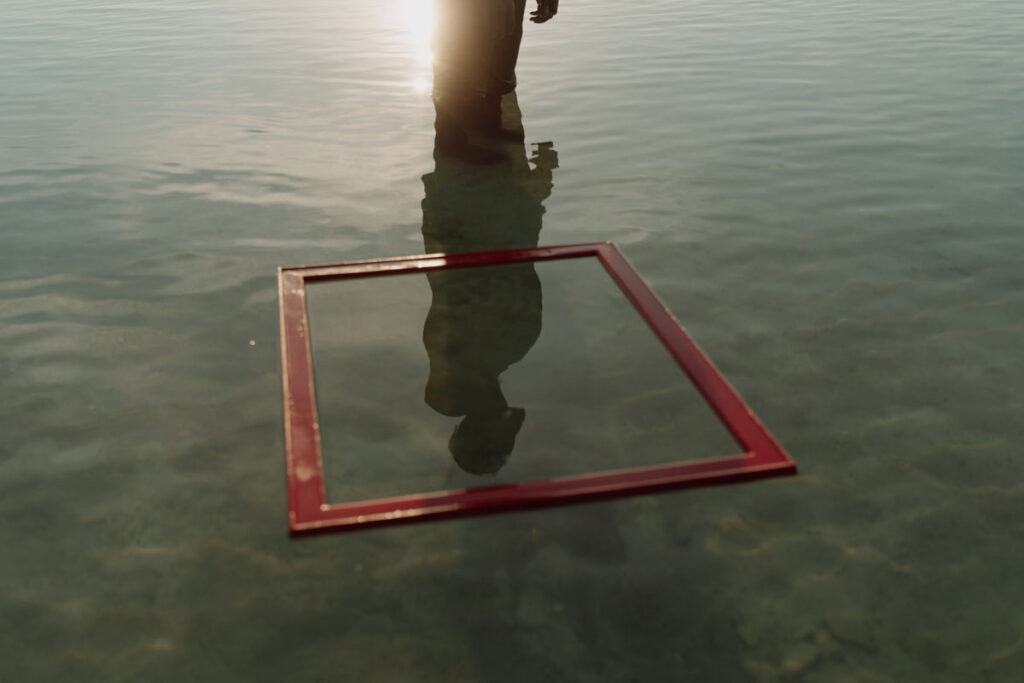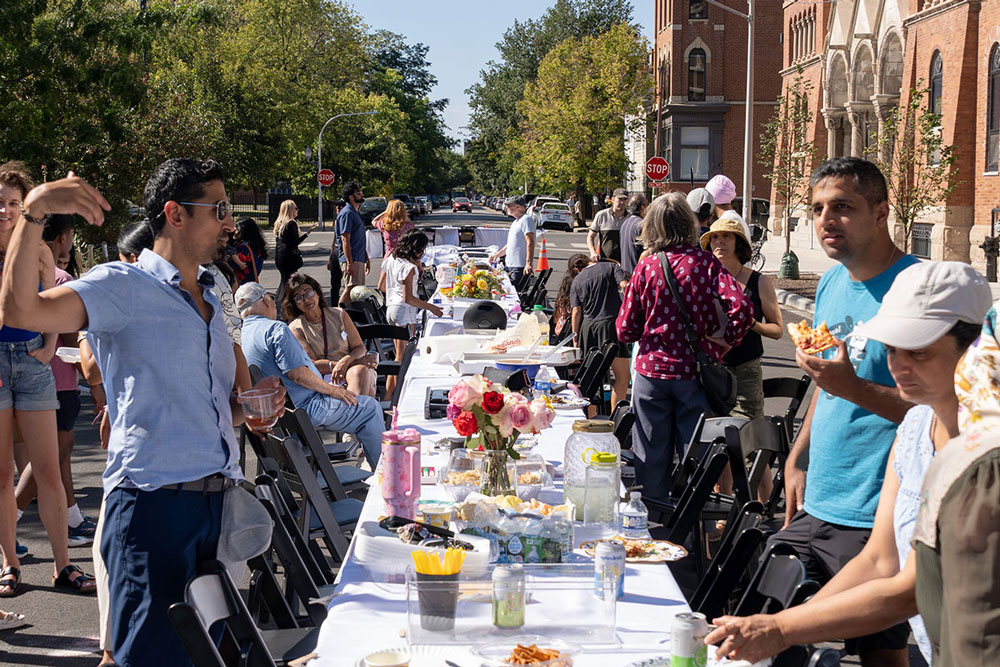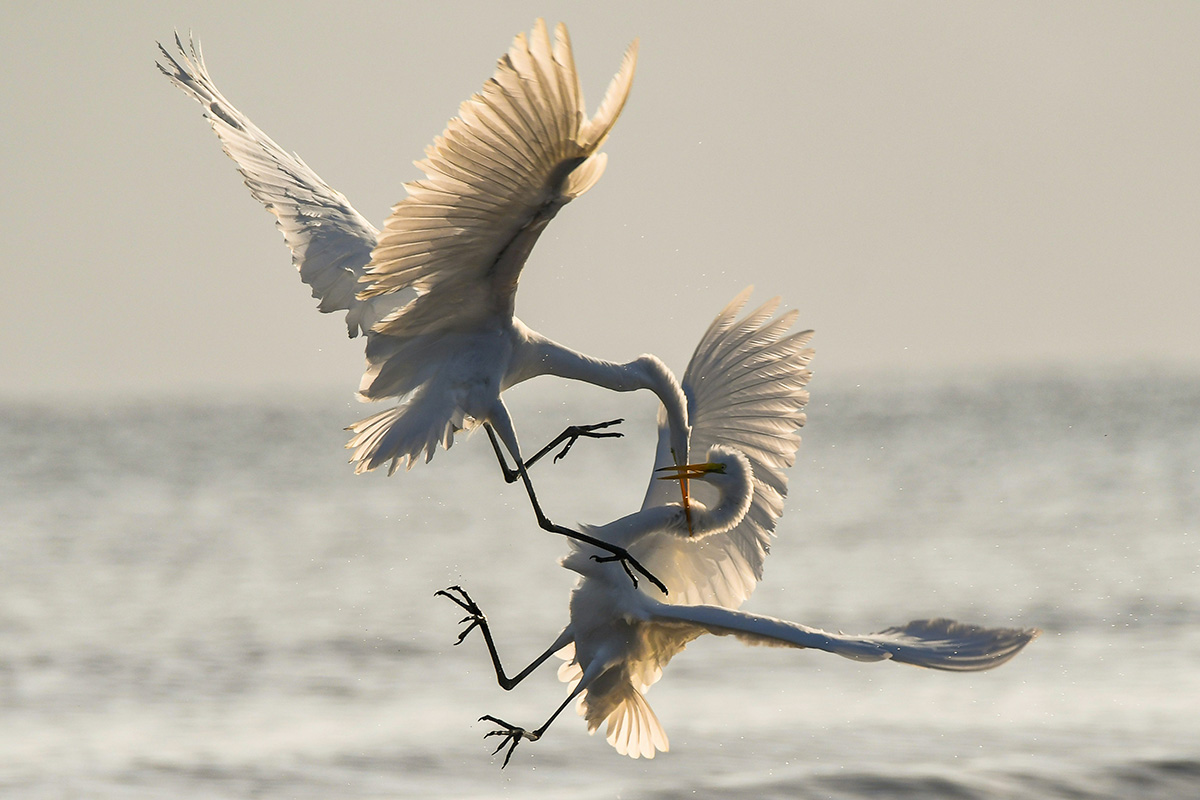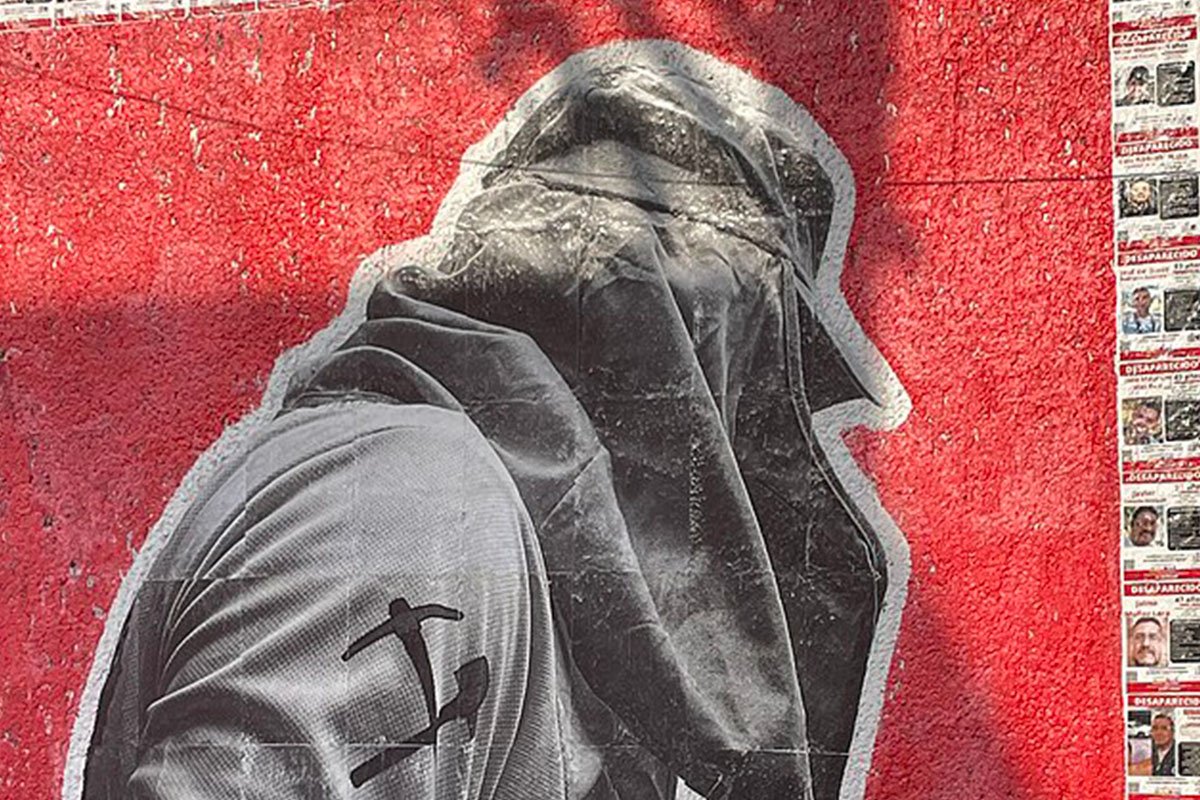
I recently spoke with Carla Minet, a journalist and executive director of the Center for Investigative Journalism in Puerto Rico, about what life is like on the island now and the key role of information in disaster response.
Minet points out that Puerto Rico has had five major disasters in the last six years. Hurricane Irma, a Category 5 storm, hit the island in September 2017, closely followed by Hurricane Maria, another Category 5 storm, which hit that same month. Then came the earthquakes of January 2020—5.8 magnitude on the 6th, 6.4 on the 7th, and 5.9 on the 11th—and the many aftershocks that made recovery difficult. On March 13, 2020, Covid was first confirmed on the island. And most recently, Hurricane Fiona hit Puerto Rico as a Category 1 storm on September 18, 2022, followed by Hurricane Ian on the 28th.
Minet says, “We find ourselves in this position again of reporting about the disaster and start thinking about an overlapping recovery process…So we can give anyone a master’s degree in disaster coverage, I guess.”
In fact, Puerto Rico is the country most affected by climate change in the world, followed by Myanmar and Haiti. And one of the Center for Investigative Journalism’s most important projects focuses on accountability.
When asked what she is learning about disaster coverage, Minet says,
Oh, so many, so many things. Basically, just understanding all the bureaucracy of our recovery process takes a lot of time. It took us more than a year to even understand where were the different pockets of money in federal government, where the information was about these pockets, what was the dictionary and wording regarding the disbursed, the committed, on all the different stages of any project that goes through FEMA or through CDBG, which are very different processes. Then, we’ve been trying to compare the information given by the federal government and the one been given by the Puerto Rico government, which was usually different in terms of the amount of money.
Minet shares that some of the difficulty stems from a problem of databases.
The wording, the categories of the information. It’s a problem of everyone doing their own system. And this problem is not only a problem for us as journalists. It is a problem also for the people who request the money and who do not understand the processes they are in.
The US government and FEMA recently changed the recovery process in Puerto Rico. They have been experimenting with section 428 of the Stafford Act, that is, the Robert T. Stafford Disaster Relief and Emergency Assistance Act, which “was signed into law in 1988 to create an orderly system to get federal assistance to state and local governments in the wake of natural disasters.”
Minet explains,
Basically, they have said that in Puerto Rico, we had to follow a process that was only used before in other territories and states for very specific initiatives, not for the whole recovery process. We have stories about these, and they explain more clearly these issues, but basically, they’ve been changing the way in which they give the money for the recovery in Puerto Rico.
Minet refers to money that would go to government, especially municipalities and organizations. But there are also problems with money earmarked for individuals and families. Minet shares,
We have published stories about some of the FEMA programs, the ones that deal with individual aid, not being thorough and bringing in US companies that know nothing about Puerto Rico and have no one in Puerto Rico to give aid to people. And their satisfaction rate, if we can say, is less than 15 percent. So they didn’t accomplish what they were supposed to do.
There’s an investigation that was just published by the inspector general last week about this program that we reported on two years ago, saying that the program was a failure. The Office of the Inspector General of DHS, Homeland Security, which is the agency over FEMA, just recently launched this investigation.
There are lots of stories about why this process has been so slow, and so bad, and in some instances, corrupt. There’s a revolving door happening all the time here—people from FEMA being hired by disaster chaser companies coming back down to Puerto Rico and getting contracts.
So yeah, we see that this has been a very bad experience for Puerto Ricans.
The result is that less than 30 percent of the money allotted for Hurricane Maria has not been used five years later. The electricity grid has not recovered since Maria. Indeed, the center finds that less than five percent of disaster relief money has been used for major infrastructure projects, including the grid.
Other factors impact repair of the electric grid, including, most notably, privatization of the distribution part of the energy system. Minet says, “That has been going on for the past two years. And it’s been a big problem. So, all of the things are happening at the same time. We feel like we are always reporting on crisis mode. We get very frustrated.”
To help staff deal with the stressors of crisis reporting, the center offers an array of support to its reporters, including mental health resources like the Dart Center Journalism and Trauma.
After Hurricane Maria, we dealt for a very long time with stories regarding the death toll. That was one of our biggest stories. It took more than a year, that investigation. It was an investigation that was very important here, and it was awarded internationally. Then, working a whole year and then some more with death, and doing interviews around disease and families and the impact in mental health. We thought that definitely we needed to bring some perspective into things. So since then, we’ve been training all along.
We’ve also hired the Self-Investigation. This is a group of journalists. They are based in Europe, but they work with Latin America, too. Journalists that were burnt, burned out. Some were part of ICIJ (International Consortium of Investigative Journalists), the one who wrote the Panama Papers and these kinds of international stories, which we are part of. So, these journalists were burned out. They decided they wouldn’t do journalism anymore, and they started their own nonprofit to develop trainings for journalists around burnout, stress, and how to deal with the tricks of the trade. And we always try to bring these resources to our team.
The Center for Investigative Journalism in Puerto Rico has a 17-member team, 15 of whom are journalists and editors. The organization has been growing and is now one of the biggest newsrooms in Puerto Rico. It has been key in helping Puerto Ricans on the island get information and clarity on government processes, and holding the government accountable.
For example, two weeks after Fiona, the government was saying that 70-80 percent of the population has electricity. But Minet says,
What we’re hearing from the people is that there are so many areas that are isolated, and that electricity has not come back. The energy company is not showing reliable data or maps or anything that people can see and be confident about the numbers they are giving.
So, there’s a problem of accountability there. Some areas have been without electricity 17 days. And this is a problem, especially for the elderly. And also for electricity-dependent populations, which is one of the stories that we broke a week ago and basically said that the government did nothing for this electricity-dependent population.
Electricity-dependent populations depend on electric devices, including medical devices such as position beds, breathers, oxygen tanks, heart machines, and dialysis, to live and function. This population is entitled to certain services. In fact, a federal program called the emPOWER Program was created exactly to identify these people before a disaster and place them in refuges or shelters that have electricity. Despite Puerto Rico’s vulnerability to climate disasters, the island’s government has not utilized this program. Minet explains,
Sign up for our free newsletters
Subscribe to NPQ's newsletters to have our top stories delivered directly to your inbox.
By signing up, you agree to our privacy policy and terms of use, and to receive messages from NPQ and our partners.
This information is gathered by the federal government from Medicaid patients. They know which patients need these kinds of devices, so they identify their names and their addresses so the government can reach out to them and put them in secure places. This program has been going on since 2015 in the US, and it has been used, for example, in California after the fires. And it’s been a very good tool. It was even used after Hurricane Irma with the US Virgin Island population that was identified and brought to Puerto Rico to be safe. So, the program can really prevent people from dying basically, and from being in a stressful situation and problems when disaster comes. Well, that program is not been used by the government of Puerto Rico. For no reason. The federal government hasn’t done anything about it.
This, of course, directly affects the journalists themselves. Minet says,
On a personal level, as journalists, these situations drive our instinct to be out there and just report and investigate what’s going on and try to put out there the information that the government is trying to just not share. But we are human beings living here in Puerto Rico, so, we deal with the lack of electricity at home, with the lack of internet, many, many times. The lack of water, et cetera. We’ve been trying to search for gasoline because it’s nowhere to be found. So, we struggled as everybody else. We have a building now that is prepared for disasters.
We installed solar panels after Hurricane Maria, so we can basically provide a roof for our team during these scenarios. And yeah, it was very important this time around, because everybody could come to the office. Some of them didn’t have water for days, so they could come here and take a bath. It was a place they could come to.
Fiona showed us that it was a great decision and a good investment because we needed to have this safe place. Right now, we are working on fundraising for the second floor of the building to be able to install solar panels for that floor too, so we can host more of our journalists. Because we were taking turns this time, and we want to be able to have them all here.
Being “the country most affected by climate change” means being in a constant state of crisis. Minet shares that she finds herself wondering, “So what’s next and when? How close is the next disaster?” But she adds,
This is also manmade disaster, because the problem is not only and is not primarily climate. It is the lack of preparedness, the lack of good response, the lack of a recovery process that is smart, that is strategic, that is quick. Those manmade issues make the problem so much worse.
Nonprofits have played a major role in Puerto Rico’s recovery efforts, as NPQ reported in a 2017 series. Minet confirms this.
All the learnings from Maria were activated this time. Nonprofits were the first to activate, in terms of immediately putting together places for people to eat, distribution of food and water, of generators, of whatever people needed. And they activated volunteers in a way that’s just, it’s incredible. And it’s awesome to see that. But on the other hand, it’s a shame also that they have to do this immense work because of the government shortcomings. Right? So that part, it bothers, it’s a bittersweet situation. It is a failure of the local government on top of the federal government.
While the center has grown, it faces challenges with fundraising to keep the newsroom going because philanthropy is not funding Puerto Rico long term. Minet says,
We get money from Puerto Rican foundations, from US foundations, and we have fundraising campaigns all through the year. And we get important support from our readers through donations and merchandise that we sell. But the thing is that when I think in terms of strategy, philanthropic strategy, I see that when these disasters come, a lot of US foundations come down to Puerto Rico and then, two years after the fact, they fade away. So, that is unsustainable.
“I feel like if Puerto Rico is like ground zero for climate disasters, it should also be ground zero for philanthropy to devise a strategy.”Minet says that the recovery process in Puerto Rico will take at least 10 years. Five years after Maria, less than 30 percent of recovery money has been spent. She continues, “Foundations that are giving money for climate change and for disasters have to ask themselves, ‘What is the best strategy to invest in?’”
The change Minet is asking for includes understanding the key role of information. She says, “All the money coming down to Puerto Rico is about charity and direct work and direct relief, and very few see information as part of the recovery process.”
When I ask Minet what is needed to support Puerto Rico’s information infrastructure, she responds,
We would need a permanent team doing accountability reporting on climate crisis and disaster recovery. We really need to work on dashboards and raw data being updated constantly—daily, if possible—in terms of the recovery processes. Maria and now Fiona. Because the government is not giving that information in a reliable way. So, we need data out there, we need reporting. Just to keep alive a team like the one we put together, we would need like $500,000 over three years. We already have a lot of infrastructure in place, but [we] need to be able to keep the team going. So, we’re not starting from zero.
Minet shares that local foundations have a strategy to reengage mainland US foundations. She says, “I feel like if Puerto Rico is like ground zero for climate disasters, it should also be ground zero for philanthropy to devise a strategy.”
“What are these learnings for Puerto Ricans that are also relevant to the US and to other countries?”
Minet says that sometimes the center applies to US foundation programs for which it qualifies, but there is no response. As a territory of the United States, Puerto Rico is in philanthropic limbo—it is often not on the radar for mainland foundations, and it does not have many international opportunities, as it is not considered a sovereign state.
We hit all the checkboxes, right? So, I thought, they will see all this data regarding income, poverty, inequality, etcetera, even the colonialism issue at hand, and they will definitely support our work in Puerto Rico. But sometimes that isn’t the case.
There’s a lot of potential here in terms of what we can do in this new stage of this process, in terms of not only doing accountability reporting and following the money, but also in terms of really giving some answers. “What are the learnings of this process? What are these learnings for Puerto Ricans that are also relevant to the US and to other countries?”
The center also seeks to expand into main Puerto Rican cities in the US to do investigations about issues affecting those communities. It’s starting this work in Florida, New York, Chicago, and Texas, places with the biggest Puerto Rican populations or most cohesive community organizations. This focus reflects the center’s close relationships with local community organizations. Minet says,
Many of our sources of information come precisely from the nonprofit sector and the community leadership in Puerto Rico, even the foundations who support us and give us inside information about things happening and things that should be investigated. So, it’s a huge pool of information for us, the nonprofit sector. Because the nonprofit sector has become also such an important character in Puerto Rico after Hurricane Maria. These people are sitting in places and getting information and being approached by the private sector, but also by government, and they know what’s happening all over the place.
Unearthing information and using community knowledge to sense make is not only critical during a disaster but for any subordinated community. The all-encompassing nature of today’s social and ecological challenges is pushing social change leaders to see and function at a higher, more integrated level. If Puerto Rico is teaching us anything, it is that the nonprofit sector is playing a leading role. Understanding emerging critical forms of information and community leadership is key.











